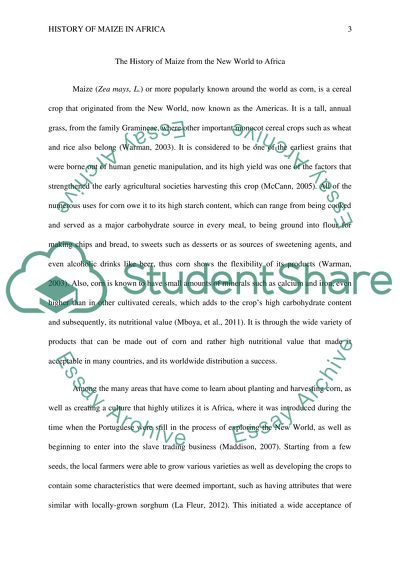Cite this document
(“The History of Maize from the New World to Africa Essay”, n.d.)
Retrieved from https://studentshare.org/biology/1404332-biology-plant-and-people-research
Retrieved from https://studentshare.org/biology/1404332-biology-plant-and-people-research
(The History of Maize from the New World to Africa Essay)
https://studentshare.org/biology/1404332-biology-plant-and-people-research.
https://studentshare.org/biology/1404332-biology-plant-and-people-research.
“The History of Maize from the New World to Africa Essay”, n.d. https://studentshare.org/biology/1404332-biology-plant-and-people-research.


